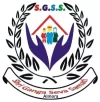CONTEXT
India will have the world’s youngest population by 2020, with an average age of 29 years and 13 million people entering the workforce each year. However, as the ASER survey has shown, learning outcomes of students completing primary or even secondary schooling are extremely low, closing pathways to senior secondary or higher education- While vocational skills could be a short & term solution, only 2 percent of the workforce in India is currently formally skilled, leaving the vast majority of youth without the skills, knowhow or networks to enter the workforce.This leads to large scale unemployment or under & employment, even as industries are unable to fill their job vacancies.
APPROACH
Sri Ganga Seva Samiti conducts short term often residential courses of 2 to 3 months in duration. focusing on young men and women from rural areas and urban slums. The model is based on strong industry linkages and youth counselling and focuses on hands on skills training. Courses taught include construction including electrical, plumbing, masonry and welding, hospitality housekeeping, food and beverage service and food production, automotive mechanic, healthcare nursing and beauty and wellness services. In addition to industry specific skill students also learn basic English, computer literacy and life skills- Sri Ganga Seva Samiti has a four & step approach to its vocational training programs.
- Mobilization
- Training
- Placement
- Postplacement support

For youth who are interested in setting up their own enterprises near their homes and to support creation of new jobs, Sri Ganga Seva Samiti provides mentoring support to set up micro enterprises- Up until now, we have supported over 100 such youth primarily women to set up successful enterprises in the fields of beauty, electrical service and construction With the aim of better management.

of the organizations formed by the organization by increasing its relations with various programs and institutions and increasing the knowledge and knowledge of their office bearers, connecting them with productive activities, strengthening the leadership capacity and management capacity of the workers associated with the programs. And the office bearers of the organizations were given training on different subjects.
